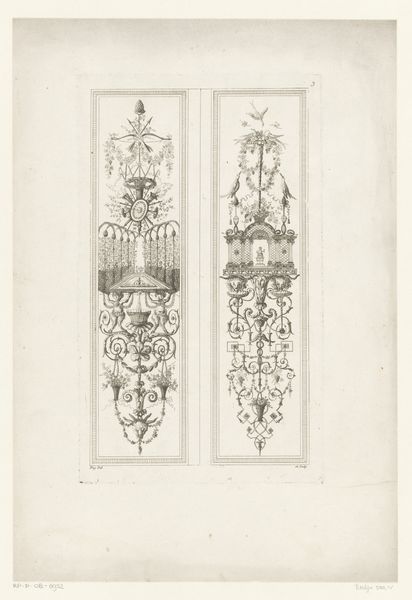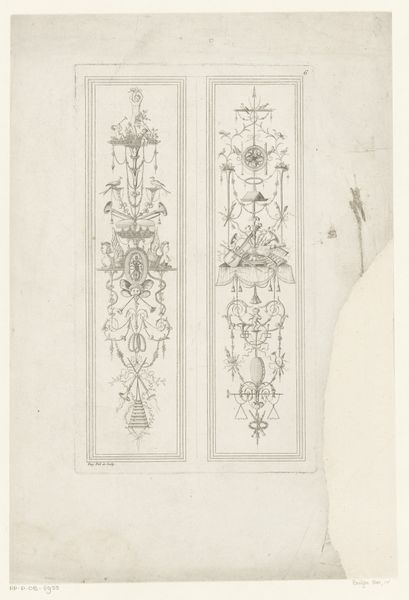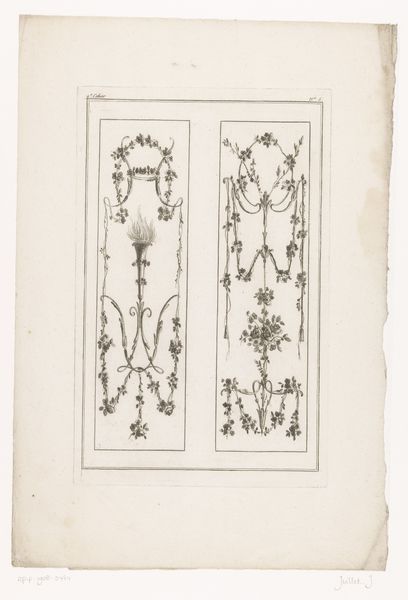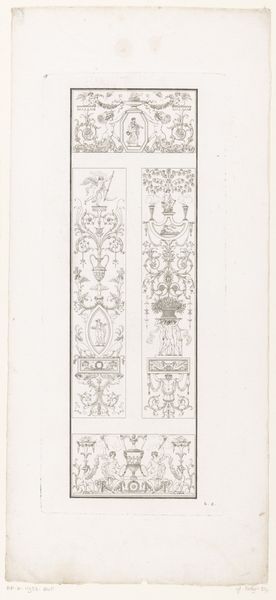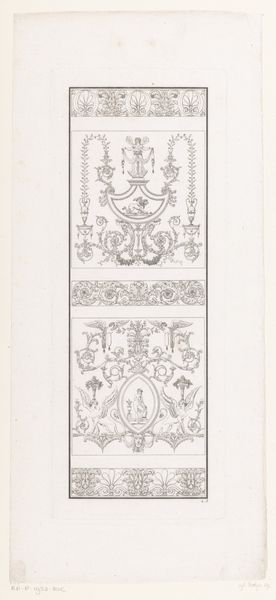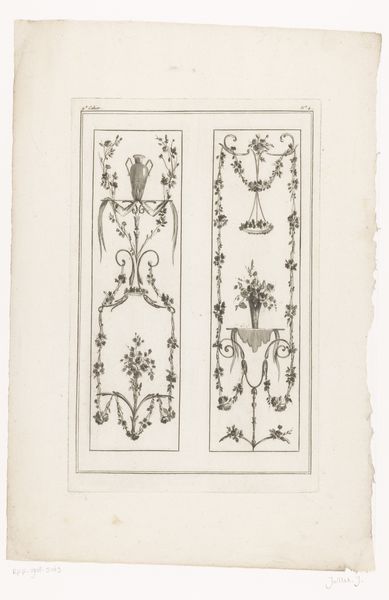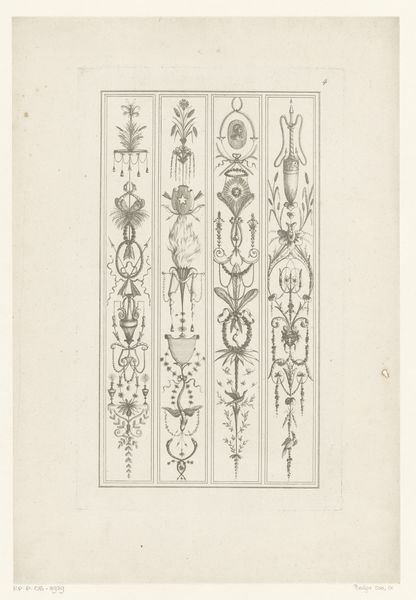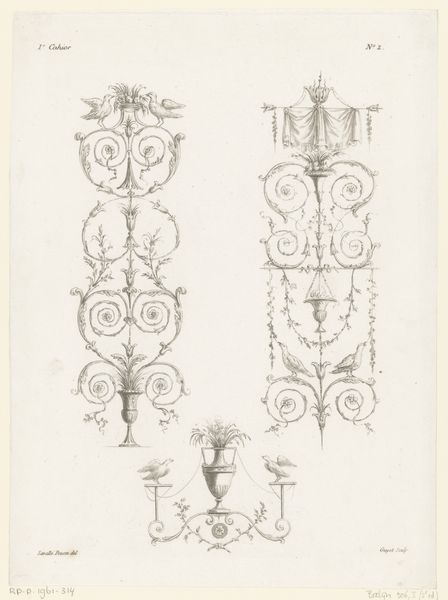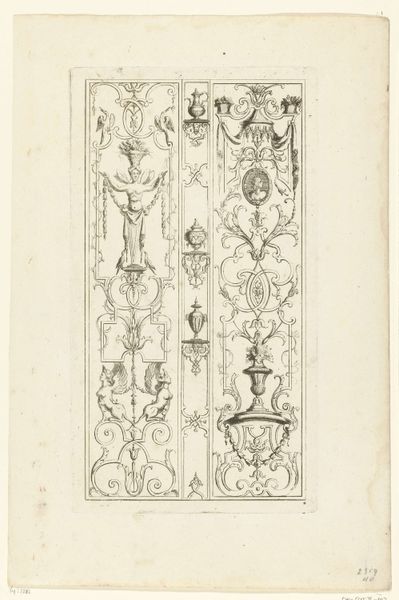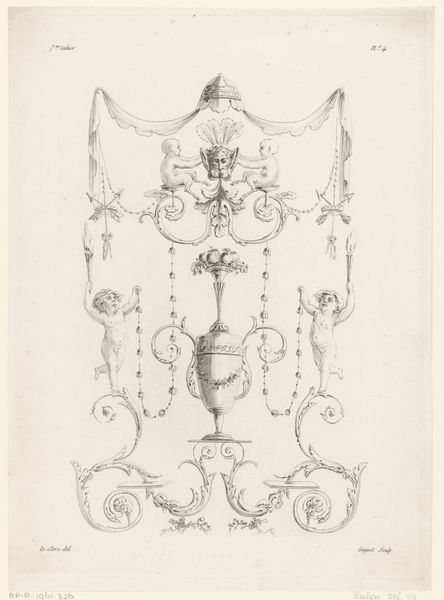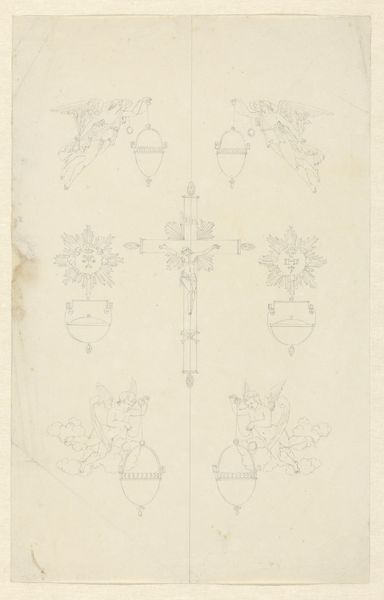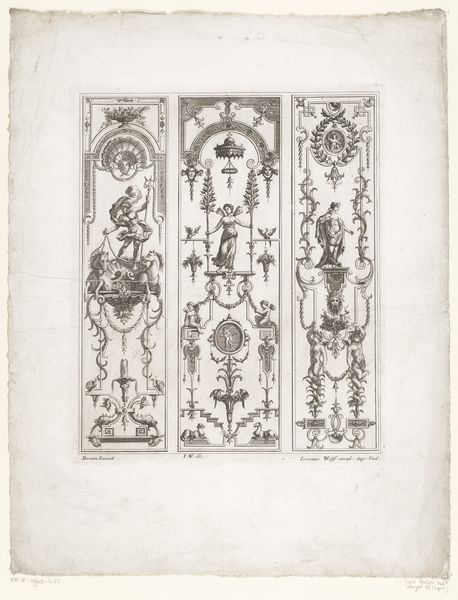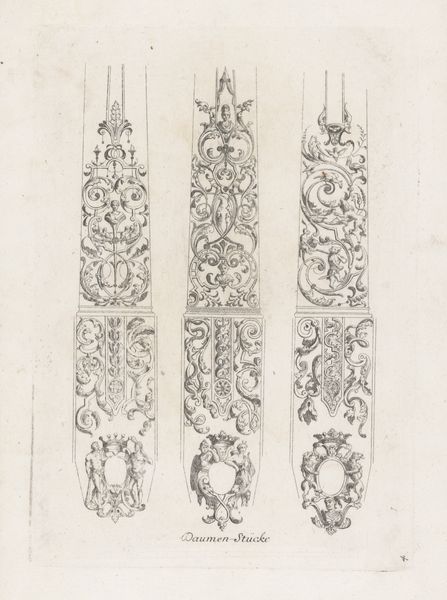
Dimensions: height 310 mm, width 182 mm
Copyright: Rijks Museum: Open Domain
Editor: This is "Arabesken met putti," a pen and ink drawing by Jean Baptiste Fay, created between 1784 and 1796. The ornamental Rococo style makes it appear very decorative, yet its symmetry and repeating motifs feel strangely calming. What symbols jump out at you? Curator: I'm immediately drawn to the putti, those cherubic figures nestled amongst the flowing arabesques. They're not simply decorative; they represent innocence, love, and divine inspiration – echoes of classical mythology reimagined in a lighter, more playful context. How do they make *you* feel within this ornamental framework? Editor: I guess their inclusion does add a sense of whimsy and perhaps even aspiration, amongst what otherwise could have been quite rigid. The arrows they sometimes wield -- are they connected to that theme of love? Curator: Precisely! The arrow, frequently associated with Cupid, reinforces the themes of love and desire, but observe how they are interwoven with botanical elements and abstract forms. Fay's brilliance lies in this visual layering. These images remind us of how cultures recycle and repurpose powerful images for centuries, preserving threads of human emotions. Does that resonate? Editor: Definitely! It’s fascinating to see how these seemingly disparate symbols coexist and create meaning. Almost like an early form of visual remixing. Curator: Precisely. And remember, these "Arabesken" were created during a period of social and political upheaval, as well as new discoveries in archaeology which spurred the Neoclassical revival. What function do you think ornament served then, both to the artist, and the viewer? Editor: It gave people a familiar sense of beauty and continuity even during a time of change, linking their cultural past with new visions for the future. I never thought of decorative arts as having such cultural and psychological weight! Curator: Exactly, these recurring visual cues are often taken for granted, when really, they are cultural touchstones with remarkable staying power.
Comments
No comments
Be the first to comment and join the conversation on the ultimate creative platform.

